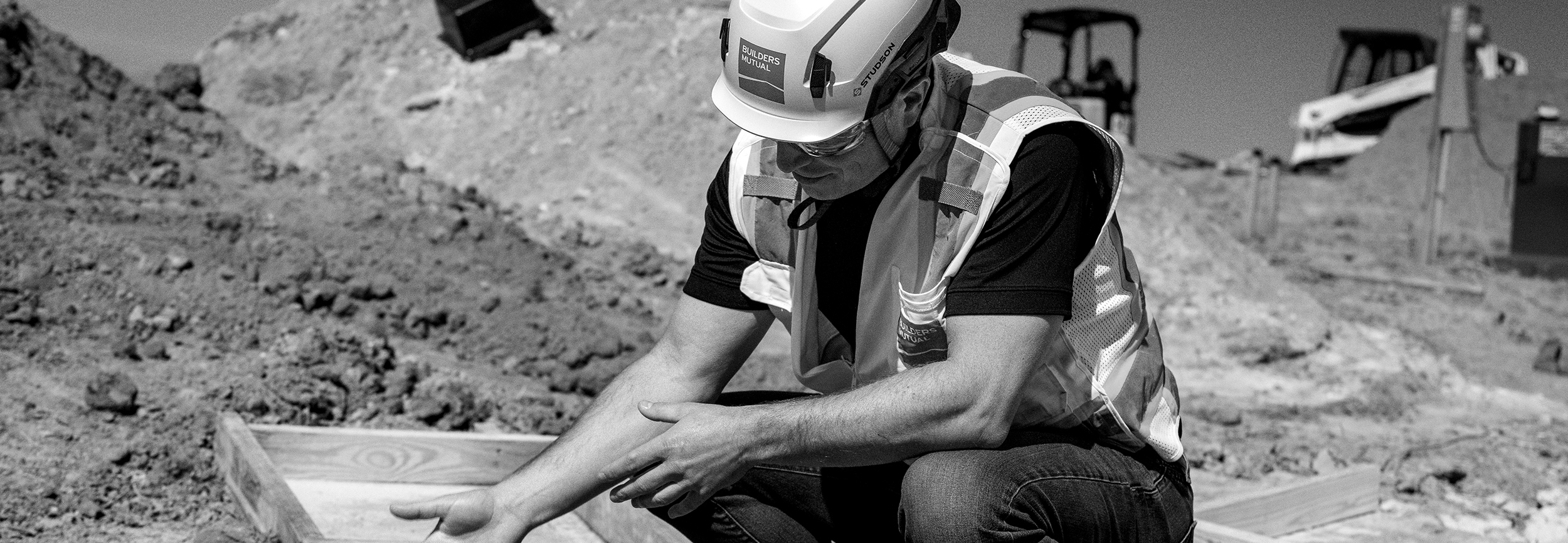Builders Mutual is committed to providing our customers with industry insights and resources that impact construction safety, culture, and business. Here, we turned to one of our Risk Management experts, John O’Grady, CSP, MBA, to go back to the basics with an overview of Workers’ Compensation coverage. Because Workers’ Compensation insurance is such an important part of your company’s day-to day operations, it’s important that safety and health professionals, as well as management staff, have a solid understanding of this topic.
First things first
Workers’ Compensation insurance is no-fault insurance that provides protection for injured employees. “No fault” means that if a worker files a claim for an incident that occurred while the worker was on the job, the worker may be covered. All claims, however, need to be investigated. Specifically, employees are covered when they are in the course and scope of their employment and when the injury arises from an accident (e.g., slip, trip, or fall, which may or may not be an OSHA-recordable incident).
Record keeping is vital, and employers need to keep two sets of records. One set is for OSHA. Note that OSHA has a strict criterion on what type of injury must be recorded on the OSHA 300 log (your Risk Management consultant can provide additional information). The other set is for the insurance carrier, and all injuries must be reported to the carrier—no matter how small the injury may be.
Employer’s responsibilities
Foundational for any business owner is to develop a culture of safety, especially a culture in which employees feel secure reporting their injuries. When employers maintain open lines of communication with their teams, they’ll keep in touch with what’s happening in the field.
If an incident occurs, your company must first address the employee’s need for medical care. When in doubt of the severity of an injury, the employee should be checked out at a medical facility. Additionally, you are required to promptly file notice of any claim with your insurance carrier if you receive a notice of an injury (verbal or written). Always document all injuries, as this helps to validate and keep a record of details. A company’s claim-reporting and submission policies should also be part of the employee handbook, with all team members signing off to ensure awareness.
Here are the key steps for employers to take:
- Complete the state form for a First Report of Injury (this form may be different than the company’s injury report form).
- Complete an internal report of investigation (gather as much information as possible).
- Preserve any and all evidence.
- Ensure any post-accident tests, such as a Post-Accident Drug Test, are conducted. (Note that the Post-Accident Drug Test is required by Builders Mutual. If a person is under the influence of an illegal substance, the claim could be denied. Companies should always have a Post-Accident Drug Test policy as part of the employee handbook and have employees acknowledge they received a copy. The Builders Mutual policy can be found here.)
Your insurance carrier is a valuable resource to help navigate a Workers’ Compensation claim. In helping manage the claim, the carrier will be able to make a determination on compensation, secure defense counsel if needed, assist with rehabilitation, provide training, and more.
Types of claims
There are two types of Workers’ Compensation claims: medical-only and lost time.
A medical-only claim occurs when medical treatment is provided, but the employee does not lose any time from work. Costs associated with this type of claim may include physician and hospital bills, prescriptions, mileage, medical equipment, etc. The claims adjuster will ensure the injured worker gets prompt and proper treatment and that the worker receives all the benefits he or she is entitled to under Workers’ Compensation laws for their state.
Lost time claims involve incidents in which the injured worker ends up out of work for longer than the state-specific waiting period and he or she may be entitled to lost-time benefits in addition to medical benefits. These are typically larger claims than medical-only, and it’s very important that the employer works with the claims adjuster to manage the claim. Costs associated with lost time may include salary reimbursement, medical expenses, and other expenses for things like legal representation and investigation activities.
Workers’ Compensation costs
The real costs of Workers’ Compensation can be tricky because premium calculation is based on several factors. The manual premium (or the premium before other factors are applied) is based on your company’s class codes and payroll. Losses also affect premium, which is why it is important to create a culture of safety within your company. A strong safety culture can potentially save your company thousands of dollars each year.
Another important factor that affects the manual premium is the Experience Modifier, or E-Mod. This number is calculated by the National Council on Compensation Insurance (NCCI) and is used by the insurance industry to compare a company’s injury experience with similar companies. The E-Mod can either decrease or increase your premium, depending on claims and injury history, as well as on frequency and severity of claims.
Because effective management of the E-Mod is critical to controlling Workers’ Compensation costs, we will be diving deeper into this topic in a separate article—so stay tuned!




 Find an
Find an